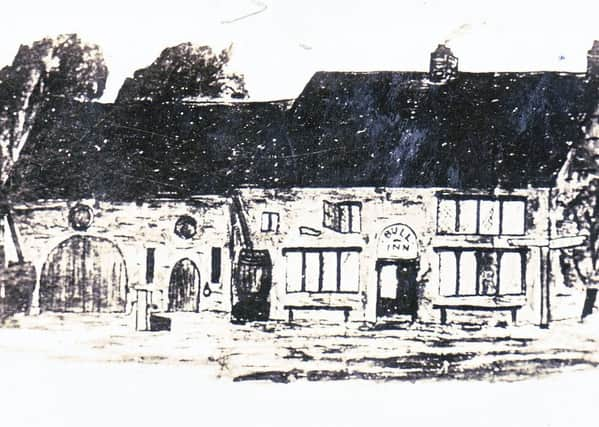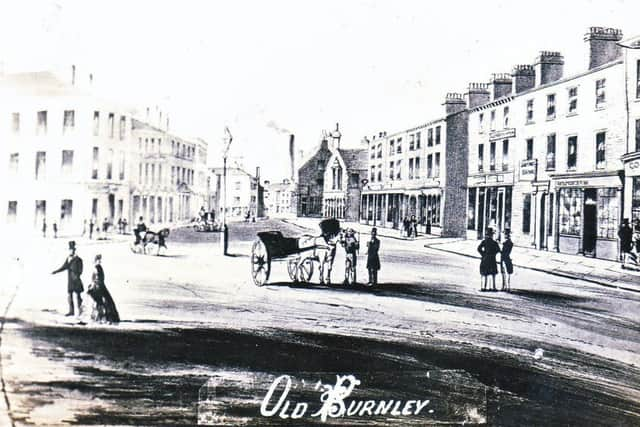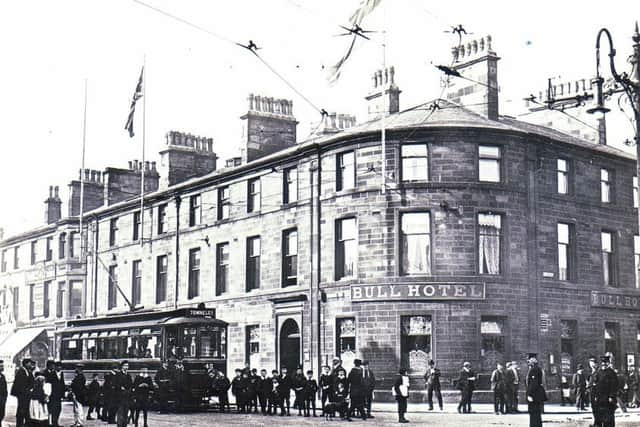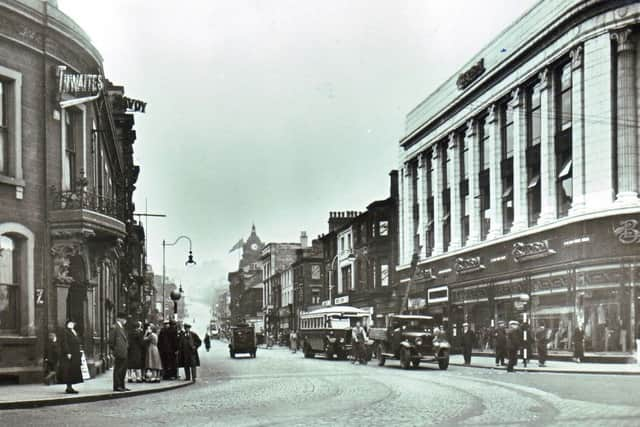The 200-year history of the Bull Hotel site


You will have noticed two of the images are not photographic. You may think they were produced before the invention of the camera but, if these were your thoughts, you would be wrong. In the course of this brief article let me try to explain why.
The first three images are of the Bull which stood at the junction of what is now Manchester Road and St James’s Street before the hotel was demolished soon after 1930. The fourth image is the Burton’s store which was built on the same site in the 1930s.
Advertisement
Hide AdAdvertisement
Hide AdNow you know where we are, let us look at the first image. It shows the Bull in its first incarnation. The building first served as a small farm – the farmhouse is to the right and the barn, with its large wooden doors, to the left. The image also reminds us that, at this time, the 18th Century, or the very end of the 17th Century, when the building was constructed, people had to be inventive about their supplies of water. Notice the hand pump in front of the barn and the water butt at the extreme left of the building. There was no piped water in Burnley until 1819 and it had to be paid for so survivals like these were very common well into the 19th Century. The pump was not always reliable, even in Burnley’s climate, so the storage of water from the roof of a building was very sensible.


As we know, the original town centre of Burnley was on Church Street, near St Peter’s, but, after the middle years of the 18th Century, the centre moved, over a generation or so, to the site seen in today’s images. There were already a small number of buildings there. So far as we know, they appear to have been small farms, or crofts, and we know some were converted for other uses once the weekly market began to be held on St James’s Street.
This is shown in the second image which was made in the 1850s. It shows the town centre as it was then. The Bull is on the left and you can see the bottom part of Manchester Road alongside the building. The market moved from outside St Peter’s to the wide part of St James’s Street.
It was no accident that St James’s Street was wider at this point. This was so because it was intended that the open market should be held there. The buildings on the right, mostly shops, were built as they were to create enough space for the market to be held comfortably.
Advertisement
Hide AdAdvertisement
Hide AdIn fact, most of these buildings were built, not as shops, but houses. They were quite substantial and some of Burnley’s wealthier families occupied them when they were first built. We have records of this but I have not the space to go into that now. Incidentally, you might wonder why these properties, as often as not, were houses rather than shops? The reason is that Burnley people in the 18th Century were not really used to buying their supplies in shops. Many grew their own food and there were numerous small market gardens all over town where food could be bought. Some of these market gardens sold directly to the public but others, you have guessed it, sold their goods – milk, cheese, butter, vegetables, bread etc - at the weekly market.


Although there had been shops on Church Street at quite an early date – years before the move to St James’s Street – they were not shops as we would recognise them. They were a bit like the single storey lock-up shops some of you will remember from your younger days. For those of you who don’t, another comparison would be with a slightly more substantial, and a little more permanent, market stall, the kind that you see, on Market Days on the main street in Skipton, even today.
The wide part of St James’s Street can still be recognised today. At the time this picture was drawn it had at least one other use. When the market was not taking place, and the stalls removed, the space was uses as a sort of taxi rank and the single horse vehicle you can see, in the middle of the picture, is involved in that trade.
Moving on to the third picture, this is the Bull Hotel which replaced the farm buildings we saw in the first image. It dates from 1819 and was built by the Hargreaves family which ran Burnley’s coal mines. The Bull Hotel was Burnley’s most important hotel. In the days before the coming of the railways it served as a stop for the stage coaches that served the town and some of the carriers used the building as a booking office.
Advertisement
Hide AdAdvertisement
Hide AdThe hotel had numerous other uses but one of them was to serve as the meeting place for Burnley’s Improvement Commissioners, one of the fore-runners of the Town Council. As one of their rivals, the Town Committee (formerly the Select Vestry) met at the nearby Swan Hotel this part of town was not a pleasant place to be when the two bodies were in dispute. When Burnley achieved long overdue Borough status in 1861 this rivalry came to an end.


Before we leave the third image I want you to realise just how big the Bull Hotel was. You can do this by counting the chimney pots on the roof of the building. Each chimney pot served the fire of one room in the hotel. It will not take you long to realise there were a lot of rooms.
Not all of the structure was occupied by the Bull – you can see some shop awnings on the left of this picture which was taken between 1904 and 1908. It was in 1904 that the Manchester Road tram lines were opened and the image was franked, as a postcard, in 1908.
The last picture shows a similar scene but the Bull has gone, replaced by the Burnley branch of Burton’s, the tailors, who still occupy the site. There were two branches of Burtons in Burnley but this one was the one most people know about. It was built in the 1930s and is one of the better of Burnley’s 20th Century buildings. If you would like to find out the dates relating to the building all you have to do is visit the site, look beneath the windows and the story will unfold.
Advertisement
Hide AdAdvertisement
Hide AdRemember, at the beginning of this article, I said I would reveal how it was that the first image was produced. It was not drawn in the 18th Century, or even in the early 19th, it was reconstructed from a bill head used by the Bull and made into a very popular postcard. The second image was drawn after the invention of photography (c1840) but it is likely it is more art than photograph. Of course, the last two images are photos and very good ones they are too.